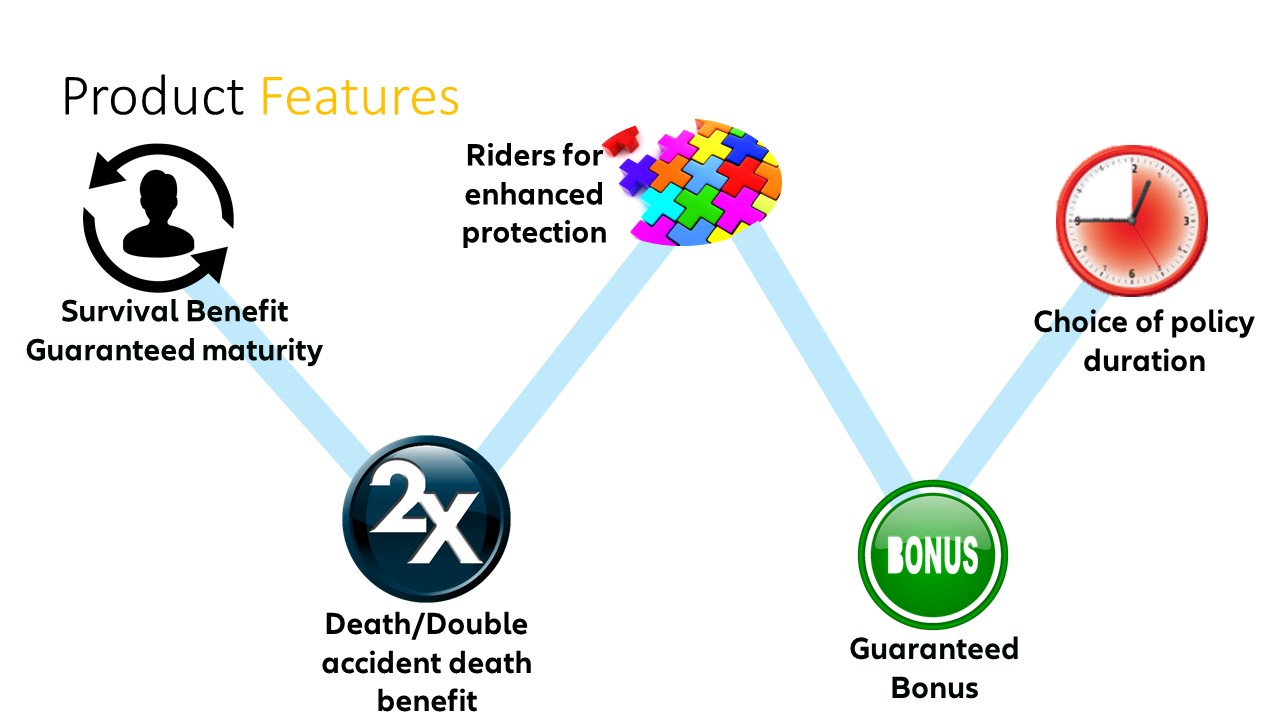Home>Finance>What Is The Purpose Of A Suicide Provision Within A Life Insurance Policy?


Finance
What Is The Purpose Of A Suicide Provision Within A Life Insurance Policy?
Published: October 15, 2023
Discover the significance of a suicide provision in a life insurance policy and how it impacts your financial security. Explore the purpose and implications of this vital component in personal finance.
(Many of the links in this article redirect to a specific reviewed product. Your purchase of these products through affiliate links helps to generate commission for LiveWell, at no extra cost. Learn more)
Table of Contents
- Introduction
- Definition of a Suicide Provision
- The Importance of a Suicide Provision in Life Insurance Policies
- Protecting the Insurer’s Interests and Minimizing Fraud
- Minimizing Moral Hazard and Adverse Selection
- Providing Financial Security to Beneficiaries
- The Duration and Terms of a Suicide Provision
- Factors to Consider When Choosing a Life Insurance Policy with a Suicide Provision
- Conclusion
Introduction
Life insurance is a valuable financial tool that provides protection and peace of mind for individuals and their loved ones. It ensures that in the event of the policyholder’s death, a designated beneficiary will receive a sum of money, known as the death benefit. However, to ensure the fair and responsible use of life insurance, insurance companies include various provisions in their policies.
One such provision is the suicide provision, which is an important aspect of a life insurance policy. This provision is designed to address the sensitive issue of suicide and its impact on the insurance industry. In this article, we will explore the purpose of a suicide provision within a life insurance policy, its importance, and how it protects the interests of both the insurer and the insured.
A suicide provision, also known as a suicide clause, sets a specific timeframe during which the policy will not pay a death benefit if the insured dies by suicide. The clause aims to address the potential risk of individuals taking out life insurance policies with the intention of committing suicide shortly after, solely to provide financial support to their beneficiaries.
The inclusion of a suicide provision helps insurance companies mitigate the risk of fraudulent claims and protects the stability of the life insurance industry as a whole. By carefully considering the duration and terms of the provision, insurers can strike a balance between addressing the risk of suicide and providing financial security to policyholders and their beneficiaries.
It is essential to understand that a suicide provision does not mean that life insurance policies do not cover death by suicide at all. Instead, it establishes a waiting period to discourage individuals from purchasing insurance with the intention of taking their own lives. After the waiting period, typically one or two years, the policy will provide coverage for death by suicide, just like any other cause of death.
Now that we have a basic understanding of what a suicide provision is, let us explore its importance in the world of life insurance and how it benefits both insurers and policyholders.
Definition of a Suicide Provision
A suicide provision, also referred to as a suicide clause, is a specific provision included in a life insurance policy that addresses the coverage and payment of death benefits in the event that the insured dies by suicide. This provision sets a waiting period, typically one or two years, during which the policy will not pay the full death benefit if the insured dies by suicide.
The purpose of a suicide provision is to protect the interests of both the insurer and the insured. The provision aims to minimize fraudulent claims and prevent individuals from purchasing life insurance policies with the intention of securing financial support for their beneficiaries in the event of their own suicide.
During the waiting period, if the insured dies by suicide, the policy may only provide a refund of the premiums paid to the beneficiary, rather than the full death benefit. This waiting period allows the insurance company to verify the legitimacy of the policy and assess the risk associated with the insured individual.
It is important to note that the suicide provision does not apply indefinitely. After the waiting period is over, typically one or two years, the policy will provide coverage for death by suicide, just like any other cause of death. This ensures that individuals who genuinely need life insurance coverage can still obtain it, while discouraging those who may exploit the policy through fraudulent intentions.
The specific terms and duration of the suicide provision can vary among insurance companies and policies. It is essential for policyholders to carefully review and understand the suicide provision in their policy to ensure they are aware of the waiting period and how it may affect the payment of death benefits in the event of suicide.
Now that we have a clear definition of a suicide provision, let us explore its importance in the context of life insurance policies and how it safeguards the interests of insurers and policyholders.
The Importance of a Suicide Provision in Life Insurance Policies
The inclusion of a suicide provision in life insurance policies serves several important purposes that benefit both insurers and policyholders. Let’s explore the significance of this provision in more detail:
1. Protecting the Insurer’s Interests and Minimizing Fraud: A suicide provision helps insurance companies safeguard their financial interests by deterring individuals from purchasing life insurance with the intention of committing suicide shortly after. By implementing a waiting period, insurers can evaluate the risk associated with the insured and minimize the potential for fraudulent claims.
2. Minimizing Moral Hazard and Adverse Selection: The presence of a suicide provision helps mitigate moral hazard and adverse selection in the life insurance industry. Without this provision, individuals with a higher likelihood of suicide may be more inclined to seek life insurance, leading to a concentration of risks and potentially increasing premiums for all policyholders. By including a suicide provision, insurers can balance their risk exposure and maintain more stable pricing for life insurance policies.
3. Providing Financial Security to Beneficiaries: While the suicide provision sets a waiting period before the full death benefit is paid in the event of suicide, it still ensures that genuine policyholders and their beneficiaries can receive financial support. After the waiting period, the policy will provide coverage for death by suicide, allowing beneficiaries to access the necessary funds to cope with the loss.
4. Addressing the Sensitive Issue of Suicide: Suicide is a deeply sensitive and tragic event, and the inclusion of a suicide provision in life insurance policies acknowledges this reality. It reflects the insurance industry’s responsibility to provide support and protection while also maintaining the integrity and sustainability of the industry as a whole.
5. Encouraging Responsible Insurance Practices: The presence of a suicide provision encourages responsible insurance practices by discouraging individuals from taking out policies solely for the purpose of providing financial support to their beneficiaries in the event of suicide. It encourages individuals to consider the long-term financial needs of their loved ones and the true purpose of life insurance.
The importance of a suicide provision cannot be overstated in the realm of life insurance. It helps insurers manage risks, prevent fraud, and ensure the fair distribution of funds to beneficiaries. Policyholders, on the other hand, can have confidence that their life insurance policies provide reliable financial protection while maintaining the integrity of the industry.
Protecting the Insurer’s Interests and Minimizing Fraud
A crucial aspect of including a suicide provision in life insurance policies is to protect the interests of the insurer and to minimize the potential for fraudulent claims. Let’s explore how this provision serves these purposes:
1. Deterrence of Intentional Suicidal Policies: The presence of a suicide provision deters individuals from purchasing life insurance policies with the intent to commit suicide shortly after. By setting a waiting period, typically one or two years, insurance companies can assess the risk associated with the insured and prevent individuals from exploiting life insurance solely for financial gain in the event of suicide. This provision acts as a deterrent against individuals attempting to secure a large death benefit for their beneficiaries through fraudulent means.
2. Verification of Policy Legitimacy: The waiting period established by the suicide provision allows insurance companies the necessary time to verify the legitimacy of the life insurance policy. During this period, the insurer can review the policy application, medical history, and other relevant information to assess the risk associated with the insured. This verification process helps ensure that the policy was obtained in good faith and mitigates the risk of insuring those who pose a higher likelihood of suicide.
3. Assessment of Risk: Suicide is considered a higher risk for insurers due to the deliberate nature of the act. By including a suicide provision, insurers can assess and manage this risk effectively. They can adjust premiums and policy terms accordingly to account for the increased risk of insuring individuals who may have a history of mental health issues or other risk factors associated with suicide. This helps maintain the stability and financial viability of the insurance company.
4. Reduction of Fraudulent Claims: Fraudulent claims can have severe financial consequences for insurance companies and policyholders alike. The inclusion of a suicide provision helps minimize the potential for fraudulent claims related to suicide. This provision discourages individuals from intentionally misrepresenting their mental state or intentions to secure a life insurance policy while planning to commit suicide shortly after. By mitigating fraudulent claims, insurance companies can allocate resources more effectively, ensuring genuine policyholders receive the financial support they need.
5. Safeguarding the Integrity of the Insurance Industry: Including a suicide provision helps maintain the integrity and sustainability of the life insurance industry as a whole. By protecting insurers’ interests and minimizing fraudulent claims, this provision ensures the industry’s reputation and promotes confidence among policyholders. It demonstrates the industry’s commitment to responsible practices and ensures that insurance companies can continue providing financial protection to individuals and their beneficiaries over the long term.
The inclusion of a suicide provision is crucial for insurance companies to protect their interests and minimize the risk of fraudulent claims. By deterring intentional suicidal policies, verifying policy legitimacy, assessing risk effectively, and reducing fraudulent claims, insurance companies can operate responsibly and provide reliable financial protection to policyholders and their beneficiaries.
Minimizing Moral Hazard and Adverse Selection
The presence of a suicide provision in life insurance policies plays a significant role in minimizing moral hazard and adverse selection within the insurance industry. Let’s explore how this provision helps address these issues:
1. Maintaining a Balanced Risk Pool: Adverse selection occurs when individuals with a higher likelihood of a particular event, such as suicide, are more inclined to purchase insurance. Without a suicide provision, individuals at a higher risk of suicide may be more likely to seek life insurance coverage. This concentration of higher-risk individuals can lead to imbalanced risk pools and significantly impact premiums for all policyholders. By including a suicide provision, insurance companies can manage and balance their risk exposure, resulting in more stable pricing for life insurance policies.
2. Mitigating Moral Hazard: Moral hazard refers to the potential behavior changes or increased risk-taking that may occur once an individual is insured. Without a suicide provision, policyholders might be more inclined to act recklessly or have less of an incentive to seek help for mental health issues, knowing that their beneficiaries will receive a death benefit even in the case of suicide. By incorporating a suicide provision, insurance companies mitigate the moral hazard associated with life insurance policies by discouraging policyholders from intentionally engaging in high-risk behavior leading to suicide.
3. Promoting Responsible Insurance Practices: Including a suicide provision encourages individuals to consider the long-term implications and purpose of their life insurance policies. It promotes responsible decision-making by discouraging individuals from obtaining insurance solely for the purpose of providing financial support to their beneficiaries in the event of suicide. Instead, it encourages policyholders to focus on the broader protection and financial security that life insurance provides to their loved ones.
4. Ensuring Fair Distribution of Premiums: By minimizing adverse selection and moral hazard, a suicide provision contributes to the fair distribution of premiums among policyholders. Without this provision, higher-risk individuals would require higher premiums to offset the increased likelihood of suicide. This could result in unfairly burdening policyholders who are at a lower risk of suicide. With a suicide provision in place, insurers can set premiums based on a more accurate understanding of the overall risk profile of their policyholders, ensuring that premium rates are fair and equitable.
5. Preserving the Financial Viability of Insurance Companies: The inclusion of a suicide provision helps insurance companies maintain their financial viability. By effectively managing adverse selection and moral hazard, insurers can minimize the financial risks associated with providing coverage for higher-risk individuals who may be more prone to suicide. This promotes the long-term financial stability of insurance companies, allowing them to fulfill their obligations to policyholders and continue providing valuable life insurance coverage.
Overall, the inclusion of a suicide provision in life insurance policies plays an essential role in minimizing moral hazard and adverse selection. By maintaining a balanced risk pool, mitigating moral hazard, promoting responsible insurance practices, ensuring fair distribution of premiums, and preserving the financial viability of insurance companies, this provision helps maintain a sustainable and effective life insurance industry.
Providing Financial Security to Beneficiaries
One of the key purposes of a suicide provision in life insurance policies is to provide financial security to the beneficiaries of the insured. While the provision sets a waiting period before the full death benefit is paid in the event of suicide, it ensures that genuine policyholders and their beneficiaries can still receive financial support. Let’s explore how a suicide provision contributes to providing financial security to beneficiaries:
1. Stable Financial Support: Life insurance is designed to provide a financial safety net for loved ones in the event of the policyholder’s death. The inclusion of a suicide provision ensures that beneficiaries will receive financial support even if the insured’s death is the result of suicide. Once the waiting period is over, typically one or two years, the policy will pay the full death benefit, providing stability and financial security to the beneficiaries.
2. Coping with Loss and Expenses: Losing a loved one to suicide is a devastating experience, both emotionally and financially. The death benefit from a life insurance policy can help alleviate the financial burden associated with funeral expenses, outstanding debts, mortgage payments, and daily living expenses. By providing financial security, the suicide provision offers a safety net for beneficiaries to navigate their lives during this challenging time.
3. Long-Term Financial Stability: The death benefit received from a life insurance policy can contribute to the long-term financial stability of beneficiaries. It allows them to maintain their standard of living and meet ongoing financial obligations, such as mortgage payments, educational expenses, and healthcare costs. This financial stability provides peace of mind and reassurance, enabling beneficiaries to focus on rebuilding their lives without unnecessary financial stress.
4. Support for Dependent Family Members: Life insurance policies with a suicide provision provide essential financial support for dependent family members, such as spouses and children. In the aftermath of a suicide, the death benefit can help ensure that these family members can continue to meet their basic needs and pursue future aspirations. It provides a measure of financial stability and helps them maintain their quality of life, especially during a time of emotional turmoil.
5. Protecting Future Generations: By receiving the death benefit from a life insurance policy, beneficiaries can safeguard the financial future of their own dependents and future generations. The funds can be utilized for educational expenses, healthcare needs, or investments to provide for the long-term well-being of the family. This legacy of financial security can have a lasting impact, transcending generations and ensuring a brighter future for the insured’s loved ones.
The suicide provision in life insurance policies recognizes the importance of providing financial security to beneficiaries, even in the tragic event of suicide. It offers stability, helps cope with immediate and ongoing expenses, supports dependent family members, and protects the financial well-being of future generations. By providing this valuable safety net, the suicide provision ensures that the policyholder’s loved ones are spared from additional financial hardships during an already emotionally challenging time.
The Duration and Terms of a Suicide Provision
The duration and terms of a suicide provision in a life insurance policy can vary depending on the insurance company and the specific policy. While the ultimate goal is to safeguard the interests of both insurers and policyholders, it’s important to understand the different aspects of the duration and terms. Let’s explore the key factors:
1. Waiting Period: The waiting period is a crucial component of a suicide provision. It is the period of time during which the policy will not pay the full death benefit if the insured dies by suicide. The waiting period typically ranges from one to two years from the policy’s effective date. During this time, if the insured dies by suicide, the policy may only refund the premiums paid, rather than providing the full death benefit. The waiting period allows the insurance company to verify the legitimacy of the policy and assess the risk associated with the insured.
2. Effective Date: The effective date of a life insurance policy is the date when the coverage begins and the waiting period starts for the suicide provision. It is important for policyholders to be aware of the effective date, as the waiting period will be counted from that specific day. It’s also essential to review the policy’s terms to understand if there are any specific conditions or requirements relating to the effective date and the suicide provision.
3. Coverage After the Waiting Period: Once the waiting period is over, typically one or two years, the suicide provision no longer applies, and the policy will provide coverage for death by suicide, just like any other cause of death. This ensures that individuals who genuinely need life insurance coverage can still obtain it and that beneficiaries are entitled to the full death benefit, regardless of the cause of death.
4. Limitations or Exclusions: Life insurance policies may have limitations or exclusions related to the suicide provision. For example, if the insured dies by suicide within the waiting period but it is determined that the suicide was a result of fraud or misrepresentation by the policyholder, the claim may be denied entirely. It is crucial for policyholders to carefully review the policy terms and any specific limitations or exclusions related to the suicide provision.
5. Renewal or Modification: The duration and terms of the suicide provision may also be subject to renewal or modification. It’s important for policyholders to review their policy periodically and be aware of any changes or updates to the terms of the suicide provision. Insurance companies may revise the waiting period or other aspects of the provision in response to industry trends or other factors.
It is essential for individuals considering or already holding a life insurance policy to thoroughly review and understand the duration and terms of the suicide provision. Being familiar with the waiting period, effective date, coverage after the waiting period, limitations or exclusions, and any potential renewals or modifications ensures that policyholders have a clear understanding of how the provision applies to their policy.
Remember, each insurance company may have different policies and specifics regarding the suicide provision, so it is essential to read and comprehend the terms outlined in the policy documents and consult with insurance professionals if further clarification is needed.
Factors to Consider When Choosing a Life Insurance Policy with a Suicide Provision
When selecting a life insurance policy that includes a suicide provision, several factors should be taken into consideration. It is essential to understand the terms of the provision and evaluate how it aligns with your needs and preferences. Let’s explore some key factors to consider when choosing a life insurance policy with a suicide provision:
1. Waiting Period: Evaluate the duration of the waiting period specified in the policy. Consider your personal circumstances, including your health, mental well-being, and overall risk factors associated with suicide. If you have concerns about the waiting period, you may want to explore policies with shorter waiting periods or policies that provide partial death benefits during the waiting period.
2. Coverage after the Waiting Period: Understand the coverage provided after the waiting period. Determine if the policy will pay the full death benefit in the event of suicide, or if there are any limitations or conditions that may affect the payout. This factor is particularly important if you have a pre-existing condition or a family history that may increase the risk of suicide.
3. Premium Costs: Compare premium rates and consider how the inclusion of the suicide provision may impact the cost of the policy. Some insurance companies may adjust premiums based on the increased risk associated with suicide. Evaluate different policies to ensure you are obtaining the best value for your coverage needs and financial situation.
4. Policy Exclusions and Limitations: Carefully review the policy to understand any exclusions or limitations related to the suicide provision. Some policies may have additional requirements or restrictions, such as specified mental health counseling or treatment. Be aware of these provisions to ensure you comply with any necessary obligations to maintain coverage.
5. Company Reputation and Strength: Evaluate the reputation and financial strength of the insurance company offering the policy. Look for companies with a solid track record and high financial ratings. This ensures that the company has the resources to meet its financial obligations, including the payment of death benefits in the event of suicide.
6. Policy Flexibility and Options: Consider the flexibility and options available within the policy. Look for features that may be important to you, such as the ability to convert term life insurance to a permanent policy or the inclusion of riders that provide additional coverage for specific scenarios, such as accidental death or disability.
7. Seek Professional Advice: Consult with a knowledgeable insurance professional who can provide guidance and assist you in understanding the nuances and implications of different policies. They can help you assess your specific needs, explain the suicide provision in detail, and recommend suitable options that align with your financial goals and circumstances.
Ultimately, selecting a life insurance policy with a suicide provision should involve careful consideration and evaluation of various factors. By assessing the waiting period, coverage after the waiting period, premium costs, policy exclusions, company reputation, policy flexibility, and seeking professional advice, you can make an informed decision that provides the necessary financial protection for you and your loved ones.
Conclusion
The inclusion of a suicide provision within a life insurance policy serves a crucial role in protecting the interests of both insurers and policyholders. It addresses the sensitive issue of suicide and ensures the responsible utilization of life insurance, while still providing essential financial security to beneficiaries.
A suicide provision sets a waiting period during which the policy will not pay the full death benefit if the insured dies by suicide. This waiting period acts as a deterrent against intentional fraudulent claims and allows the insurance company to assess the risk associated with the insured. After the waiting period, the policy will typically provide coverage for death by suicide, just like any other cause of death.
The importance of a suicide provision can be seen in its role in protecting the insurer’s interests and minimizing fraudulent claims. It helps manage moral hazard and adverse selection by encouraging responsible insurance practices and maintaining a balanced risk pool. Additionally, it offers vital financial security to beneficiaries, allowing them to cope with the expenses and maintain stability in the aftermath of a loved one’s suicide.
When choosing a life insurance policy with a suicide provision, it is essential to consider factors such as the waiting period, coverage after the waiting period, premium costs, policy limitations, company reputation, policy flexibility, and seek professional advice. Understanding the terms and evaluating how they align with your needs and circumstances can ensure that you select a policy that provides the necessary financial protection.
In conclusion, the inclusion of a suicide provision in a life insurance policy strikes a balance between addressing the risk of suicide and ensuring the well-being of policyholders and their beneficiaries. It provides a crucial safety net while minimizing fraudulent claims and promoting responsible insurance practices. By understanding and considering the factors involved in a suicide provision, individuals can make informed decisions and secure the financial security they and their loved ones deserve.














